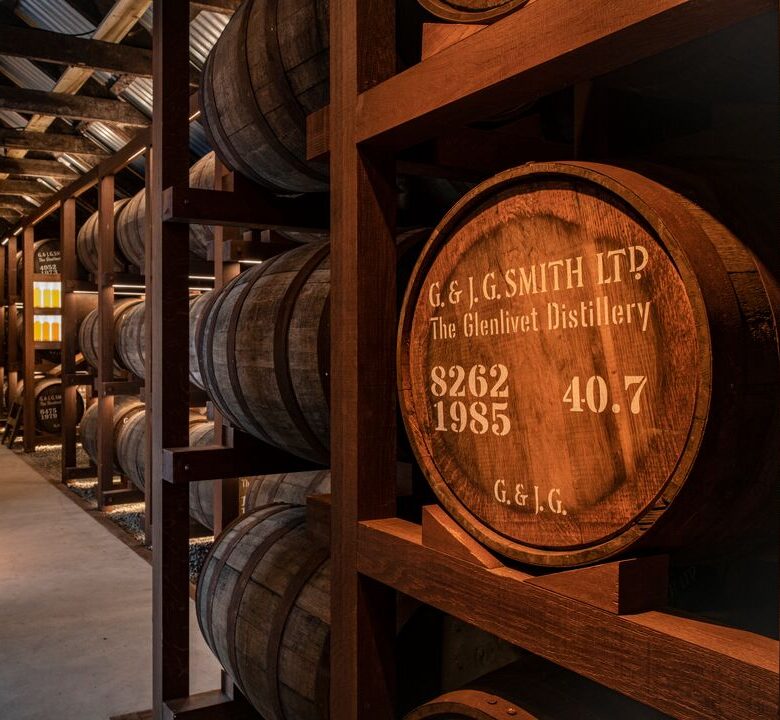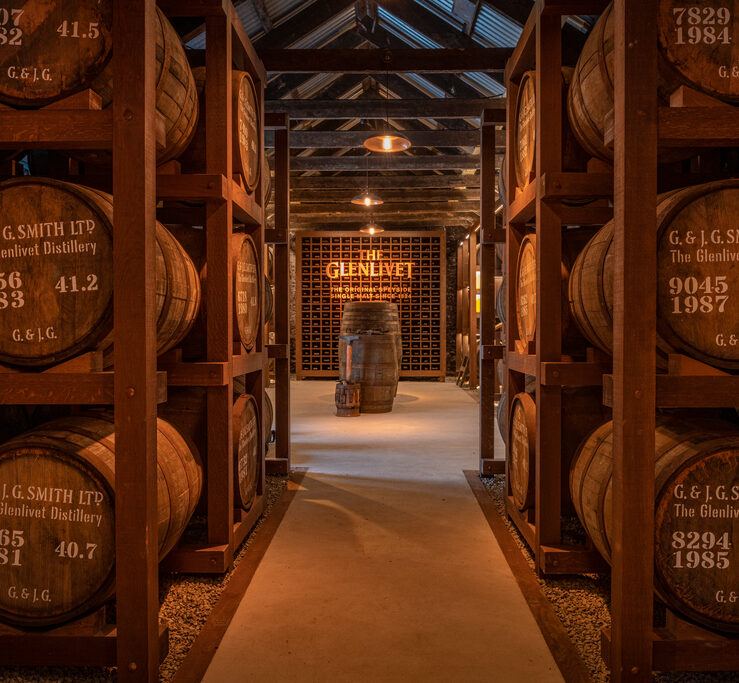
Whisky is a spirit with a rich history and complex production process. Many aspects contribute to its unique flavour profile, which is why the thousands of whisky types around the world all taste different.
Cask selection is a decision that has a huge influence on the final expression, and whether a whisky is peaty or floral is, in part, determined by the origin of its ingredients. One crucial yet perhaps lesser-known element is the humble whisky washback. These vessels play a vital role in the fermentation stage of whisky production, influencing the character and quality of the final product.
In this whisky guide, we delve into the significance of whisky washbacks, exploring their construction, function, and impact on the whisky-making process.
What is a whisky washback?
Whisky washbacks are large, cylindrical vessels used in the fermentation stage of whisky production. They serve as containers where the key ingredients (malted barley, water, and yeast) are combined to begin the process of converting sugars into alcohol. The term “wash” refers to the liquid produced during fermentation, which eventually becomes the precursor to whisky.
What are whisky washbacks made from?
A washback must be strong, easy to clean and straightforward to repair. Whisky washbacks can be made of various materials but tend to be crafted from wood or stainless steel.
Wood
Traditionally, wooden washbacks were preferred for their porous nature, which aids in fermentation and contributes to the flavour profile of the whisky. Larch or pine are the most common types of wood used in washback construction as they produce long, straight planks and have a tight grain that reduces the likelihood of the washback leaking. In addition, as a material, wood does not conduct heat which makes regulating the temperature of the wash much easier.
Cast iron
In the 19th century, whisky producers began seeking an alternative to wooden washbacks. At the time, their answer was cast iron. They believed that this was a better option as the material meant that the washback could be tightly sealed. However, cast iron washbacks soon fell from favour and were replaced by stainless steel vessels.
Stainless steel
In the early 20th century, stainless steel was invented, and it quickly became the chosen material for a huge range of products from cutlery and tools to automotive parts and appliances. The majority of modern whisky washbacks are now also made from stainless steel as they are easy to clean and can be sealed to prevent bacteria and pollutants from entering the wash.
Although many distilleries use stainless steel, The Glenlivet has remained true to its original production techniques. We use Oregon pine washbacks, which add to the distinctive taste and aroma of The Glenlivet whiskies.
How big are whisky washbacks?
Whisky washbacks come in various sizes depending on a distillery’s production capacity and preferences. They range from around 10,000 to 60,000 litres in capacity although typically, they measure around 12ft across and 20ft deep.
However, some distilleries have smaller washbacks for experimental batches or larger ones for high-volume production. In the world of whisky, there is even a well-known story of servicemen from the Scapa Flow naval base in the Orkney Islands in Scotland using massive washbacks from a nearby distillery as communal baths.
The size of the washback is a key consideration for producers as it can influence factors such as the fermentation time and temperature control during the whisky-making process.
What do whisky washbacks do?
When it comes to how scotch is made, the washback is a pivotal component. Whisky washbacks are used in the fermentation stage of whisky production. This stage follows the mashing process, where malted barley is mixed with fresh, hot spring water in a mash tun to extract fermentable sugars, producing a sugary liquid known as wort.
In the washback, the wort is fermented by adding yeast. This transforms the wort into a frothy, beer-like liquid which is called “wash”. It’s quite an exciting process as the combination of wort and yeast results in the mixture producing carbon dioxide. This causes bubbles to rise to the surface and in some cases, it can even cause the entire wash to shake due to the movement of the gas! It’s for this reason that the washback is usually only filled two-thirds of the way full. Some washbacks are also equipped with a rotating arm that skims the bubbling froth before it reaches the top of the washback and overspills.
Following fermentation in the washback, the wash liquid has an alcohol content of approximately 7-8% ABV. It is then transferred into stills so that it can undergo distillation before finally being placed into oak casks to mature for a minimum of three years.
How long does whisky stay in the washback?
The duration whisky stays in the washback varies depending on each distillery’s production process. However, fermentation usually lasts between two and four days, although some distilleries may extend fermentation times to achieve specific flavour characteristics. At The Glenlivet distillery, our typical fermentation time is around 50 hours.
How does the washback impact the flavour of whisky?
The washback can impact the flavour of whisky in several ways. The type of material used, the shape, size, and previous use of the washbacks all play a role in influencing the flavour profile of the whisky.
Wooden washbacks, like The Glenlivet use, can impart subtle nuances such as fruity, floral, or spicy notes.
Additionally, the presence of microbes in wooden washbacks can contribute to the development of unique flavours and aromas in the whisky.
Equipped with all this new whisky washback knowledge, you’ll be able to fully appreciate the washback’s part in whisky’s story next time you are enjoying a dram. If you’d like to learn even more about the intricacies of whisky from barley to bottle, check out some of our other articles including our overview of cask strength, a comparison of single malt vs double malt, or an exploration of rare whisky expressions from The Glenlivet.



